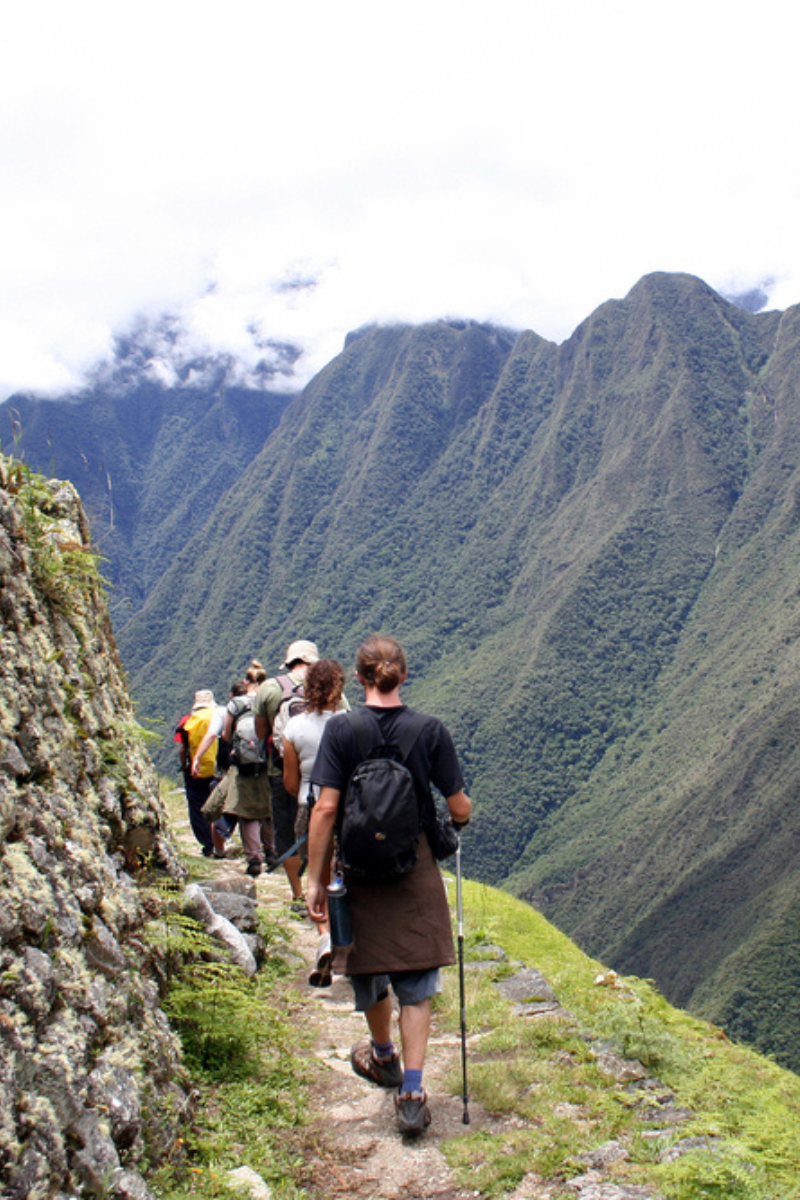Machu Picchu and the Galápagos Islands, two bucket-list destinations that feel like they belong on different planets, yet somehow make the perfect adventure duo. One takes you high into the Andes, where the Inca Trail winds through misty mountains and ancient ruins. The other drops you into a wildlife wonderland, where sea lions nap on park benches and giant tortoises lumber around like they own the place (because, honestly, they do).
But here’s the thing – timing is everything. The best time to visit Machu Picchu and the Galápagos isn’t just about dodging the rainy seasons or scoring the best weather. It's all about capturing these places at their most magical – whether it's the bright skies over Aguas Calientes, the calm waters of the ideal Galápagos tour, or the perfect combination of crowds and serenity.
In this guide, you'll learn what makes Machu Picchu and the Galápagos so remarkable, the optimum dates to visit both so you can plan your dream trip, and some helpful tips and techniques along the way.
Introduction to Machu Picchu and the Galápagos Islands
Few places can match Machu Picchu and the Galápagos Islands in terms of appeal. These two South American marvels offer vastly different but equally incredible experiences: one is a historic Incan citadel shrouded in mist, the other is a nature sanctuary untouched by time.
Machu Picchu: A wonder of the ancient World
Machu Picchu, perched high in the Andes Mountains, is more than just Peru's most popular tourist destination; it provides a window into the Inca Empire's incredible past. Built in the 15th century, this stunning monument was abandoned after the Spanish invasion and remained unknown until 1911, when Hiram Bingham brought it to public prominence. Today, its stone terraces, temples, and panoramic views of the Sacred Valley make it one of the world's most spectacular archaeological wonders.
Some fascinating facts about Machu Picchu:
- The ruins are around 2,438 metres (8,000 ft) above sea level, and Cusco, the gateway city, is much higher at 3,400 metres (11,152 ft), therefore altitude adjustment is required when arranging a trip.
- The famous Inca Trail takes four days to hike, but you can also take a scenic train from Aguas Calientes.
- The site is built without mortar – the stones fit so perfectly that not even a blade of grass can pass between them.
Aside from history, Machu Picchu and the Galápagos Islands have something unique: an unearthly beauty that feels right out of a dream.
Why the Galápagos Islands are unlike anywhere else
The Galápagos Islands, located 600 miles off Ecuador's coast, are unlike any other place on the planet. Given that the fauna here evolved without human intervention, animals do not flee when you approach; instead, they watch you with interest.
What makes a trip to the Galápagos Islands so memorable?
- There's wildlife everywhere: sea lions sleep on beaches, giant tortoises roam freely, and blue-footed boobies perform their distinctive mating dance.
- Each island has a unique geology, ranging from volcanic lava plains to crystal-clear bays.
- Unrivaled snorkeling: Plan a trip of a lifetime and swim with marine iguanas, playful sea lions, and even hammerhead sharks.
- Because tourism is heavily regulated, the islands remain untouched, just as Charles Darwin saw them in 1835.
Now that we've covered what makes these sites unique, let's look at the best time to travel to Machu Picchu and Galápagos so you can plan your trip at the best time of year.
When is the best time to visit Machu Picchu and the Galápagos?
Finding the best time to travel to Machu Picchu and the Galápagos Islands is like solving a fun puzzle: two entirely different climates, one wonderful adventure. Machu Picchu has a distinct wet and dry season, whereas the Galápagos Islands are influenced by ocean currents, which affect everything from water temperatures to wildlife activity. If you time it well, you'll be able to enjoy these legendary destinations to their full potential.
Machu Picchu’s dry season (April to November)
This is hands-down the best time for hiking the Inca Trail, wandering the Sacred Valley, and getting that jaw-dropping sunrise over the ruins. No rain poncho panic, no muddy trails – just clear skies and epic views.
Why you’ll love it:
- Perfect hiking conditions – dry trails, mild temperatures
- Unreal sunrises over Machu Picchu
- Best time for the Classic Inca Trail and Rainbow Mountain
What to watch out for:
- More tourists mean greater prices for hotels and tickets.
- The nights in the Andes can be extremely cold (bring warm clothes!)
Best Month to Visit: May – the landscapes are still lush from the rainy seasons, but the crowds haven’t taken over yet.
Machu Picchu’s wet season (December to March)
If you don’t mind a little rain, Machu Picchu’s wet season can be magical. The mountains turn vivid green, crowds disappear, and the whole place feels more peaceful. You might get a little wet, but hey, that’s what waterproof gear is for.
Why you’ll love it:
- Fewer tourists – no fighting for the perfect photo
- The scenery is unbelievably lush (your future self will thank you)
What to watch out for:
- Muddy trails = slippery hikes
- The Inca Trail closes in February for maintenance
Best Month to Visit: December – you’ll get green landscapes without the madness that comes with the high seasons.
Always check weather forecasts and additional sources to determine the best time to visit Machu Picchu for you.
Galápagos dry season (June to November)
Calling all wildlife lovers – this is the best time for snorkeling and diving! The Humboldt Current brings cold, nutrient-rich water, which means penguins, whale sharks, and playful sea lions are everywhere. It’s a little cooler, but the marine life is next-level amazing.
Why you'll love it:
- World-class snorkelling and diving.
- Cooler temperatures, ideal for hiking in volcanic terrain.
- There are fewer tourists than during the peak holiday season.
What to watch out for:
- Consider wearing a wetsuit as the water may be frigid.
- Boat tours might be somewhat rough.
The best time of year to visit the Galápagos Islands is September and October, when there are fewer visitors, excellent marine wildlife sightings, and cooler temperatures for hiking, though the seas can be rougher. It’s much too cold for snorkelling but the atmosphere will leave you breathless. The warm season (December to May) is often recommended for calmer waters and better visibility.
Top adventures in Machu Picchu and the Galápagos Islands.
If you're planning a vacation to Machu Picchu and the Galápagos Islands, why not add some of these must-do activities to your itinerary? From ancient routes to breathtaking animals, these are the best excursions you won't want to miss.
1. The classic Inca Trail
The Classic Inca Trail is the original route to Machu Picchu. This four-day walk takes you through breathtaking Andean scenery, cloud forests, and ancient ruins. When you arrive at the Sun Gate, you will be treated to your first breathtaking vista of Machu Picchu at daybreak.
Why do it? It's the most iconic method to get to Machu Picchu. You'll be traversing the same trail as the Incas, taking in history and some truly breathtaking sights.
2. Vinicunca Rainbow Mountain day hike
The Vinicunca Rainbow Mountain hike is a must-do for anyone looking for high-altitude thrills. This one-day ascent of roughly 5,200 m (17,060 ft) takes you through breathtaking scenery and past alpacas before reaching the mountain's multicoloured slopes. It is a sight that you will never forget.
3. Visit the Maras Salt Flats
Located near Cusco, the Maras Salt Flats are a stunning sight, with thousands of salt ponds spilling down the mountainside. They’ve been in use since Inca times, still harvested the traditional way.
Why do it? It's ideal for photography, and you can get some of the greatest natural pink salt directly from the source.
4. Snorkel with Sea Lions in Galápagos.
If you're visiting the Galápagos, don't pass up the opportunity to snorkel with playful sea lions. These fascinating critters enjoy swimming alongside guests, frequently whirling and blowing bubbles.
Why do it? It’s like snorkeling with puppies underwater – super fun, full of energy, and one of the highlights of your trip to Galápagos.
5. Walk among giant tortoises
On Santa Cruz Island, visitors may come up close to the iconic Galápagos giant tortoises. These gentle giants roam freely across the highlands, and some are more than a century old.
Why do it? It's a rare opportunity to see these ancient creatures in one of the few places where they still live.
Machu Picchu and the Galápagos Islands provide unforgettable experiences, whether you're trekking the Inca Trail, snorkelling with sea lions, or visiting gigantic tortoises. For more interesting tours, click here.
Safety in Peru and Galápagos
Visiting Peru and the Galápagos Islands is an unforgettable experience, but like with any adventure, you must be informed and cautious. Whether you're trekking the Inca Trail, exploring the Sacred Valley, or taking a Galápagos tour, here's how to stay safe no matter when you visit:
1. Altitude adjustment
Machu Picchu stands tall at 2,432 meters (7,972 feet), but Cusco is considerably higher at 3,397 meters (11,152 feet). If you are not adapted to the altitude, take it slowly during the first few days. Drink coca tea to help with acclimatisation, but avoid Pisco Sours until you feel better.
2. Keep an eye on your belongings
Pickpocketing can be common in Aguas Calientes, marketplaces, and on buses. Keep your valuables secure – consider using a money belt – and avoid displaying expensive items in busy areas.
3. Taxis and transportation
To avoid scams, use official taxis or rideshare apps instead of hailing random cabs. Before you get in, always confirm your fare, especially in tourist-heavy spots.
4. Trekking safety
If you go hiking, especially during the rainy season (November to March), be prepared for treacherous trails. Make sure to adjust to the altitude first, stay hydrated, and remember that altitude sickness is unaffected by fitness!
5. Water and food
Avoid drinking tap water and instead opt for bottled or filtered water. To avoid stomach problems while visiting Machu Picchu or on a Galápagos trip, choose busier booths with fresh food.
For more tips on staying safe during your trip to South America, check out this full guide on travel safety.
Best time to visit Machu Picchu and the Galápagos Islands
Trying to figure out when is the best time to visit Machu Picchu and the Galápagos? It completely depends on the type of adventure you desire. If you want a clear sky and stunning treks, the dry season (April to November) is the best time to hike the Inca Trail without worrying about muddy paths. Prefer fewer crowds and lush green landscapes? The wet season (December to March) has its perks too.
Over in the Galápagos, the wildlife is incredible year-round, but different months bring different highlights. Want to snorkel with sea lions? Visit between January and March. Hoping to see blue-footed boobies doing their hilarious mating dance? Aim for April to June.
If planning all the details sounds overwhelming, groups like Follow Alice can help you experience places like Machu Picchu the right way – without the stress. Because let’s be honest, you should be focusing on exploring ancient wonders, not logistics.





